
8D ASSOCIATION
The 8D Association is dedicated to promoting the history of the railways of South Lancashire, Merseyside and North Cheshire.
The Liverpool and Manchester Railway.
There have been thirty two stations on the line since it opened on 15th September 1830.
Liverpool Lime Street.
Opened in 1836 and enlarged in 1845 – 51 the station is still a grand terminus today.The ugly 1960’s shops built at the front have been demolished and this has given the station some of its character back. Work commenced on 30th September 2017 to provide two extra platforms, alterating some existing platforms, re-align some lines, pointwork and signalling which involved the abolition of Lime St Signal Box. The upgrade work was completed in the latter half of 2019 which meant the re-introduction of direct services to Glasgow and Edinburgh. This was the largest improvement works at the station since the 1845 – 51 extension was constructed.
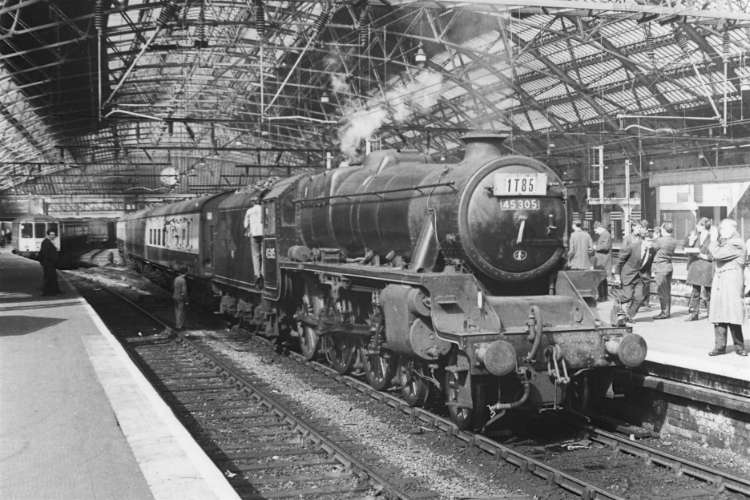
(To see more of John’s images, see: ‘The Lads from Liverpool‘ Book with Peter Hanson, published by Silver Link Publishing)
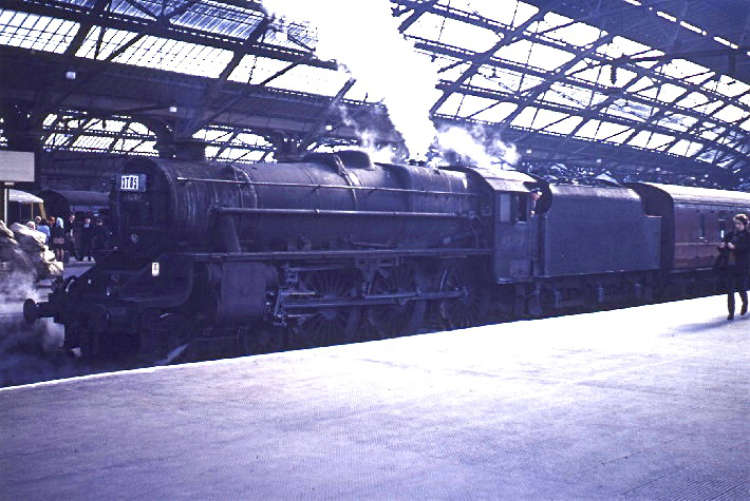
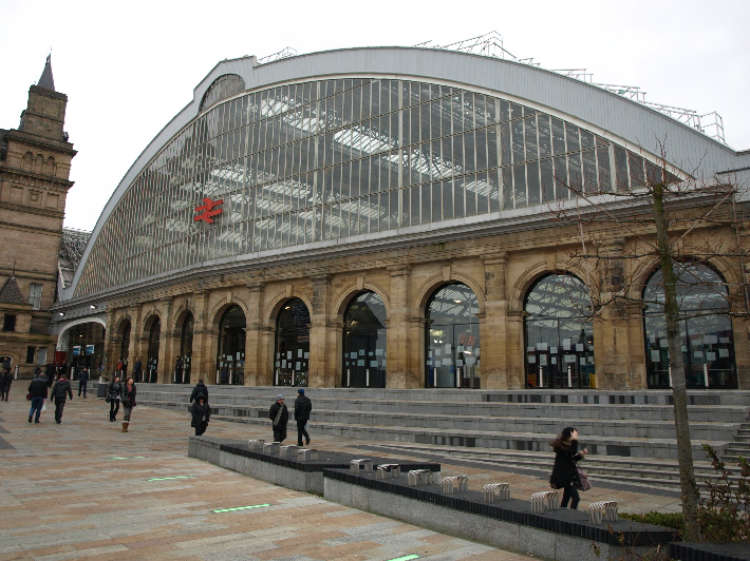
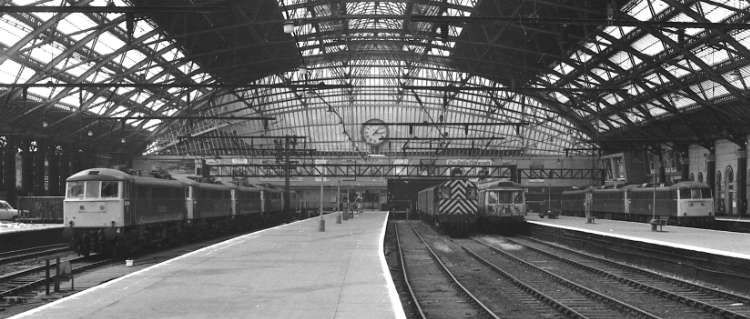
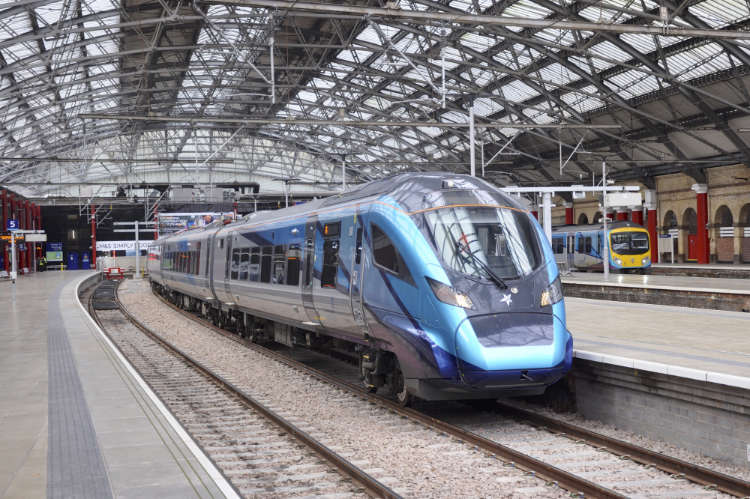
Edge Hill
With the opening of Lime Street Edge Hill lost its role as the Liverpool Terminus. This role can still be seen today though in the impressive 1830’s station that survives. Virtually unchanged from then it is now one of the oldest railway stations in the country. The original station had opened with the commencement of passenger services on 17th September 1830. This station was rebuilt and the present one opened around 15th August 1836 and has now been functioning as a station for over 175 years. In the past the station had suffered, considerably, from a lack of basic maintenance recent years, it has much improved.
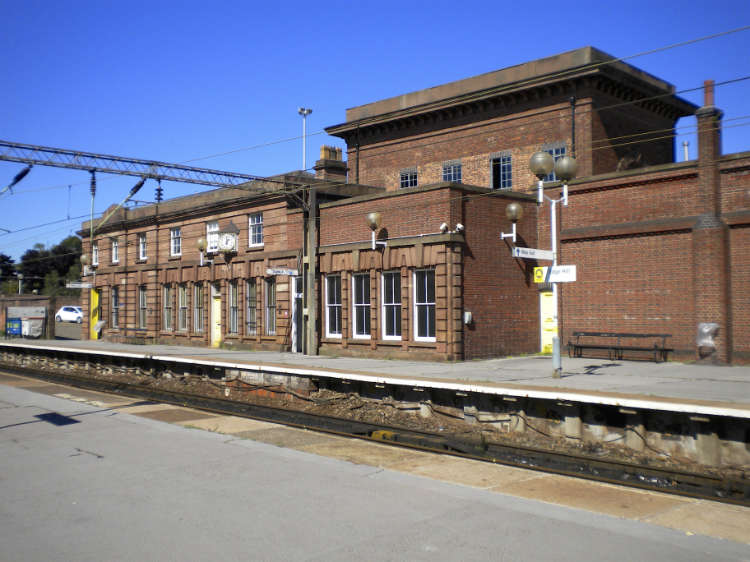
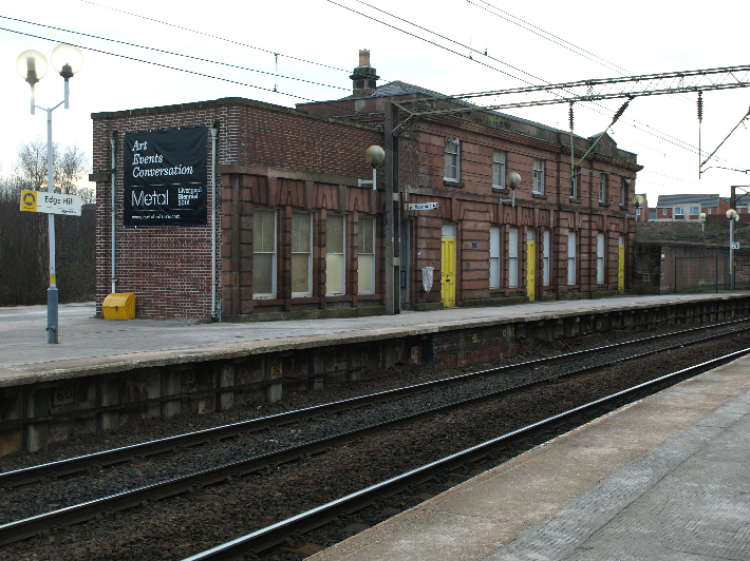

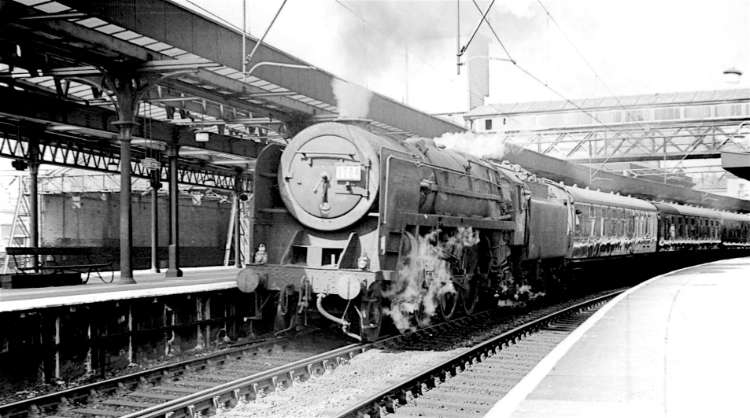

Wavertree Technology Park.
Opened in 2000 at a cost of £ 2 million the station takes its name from the business park which it serves. The park was built near to the site of the former coal concentration depot and Edge Hill (8A) steam shed.

Broadgreen.
Broadgreen station opened with the commencement of passenger services on 17th September 1830 and first appeared in timetables on 1st March 1831. The station was rebuilt by the LNWR when the line was quadrupled from Liverpool to a point east of Huyton station. A massive change for the station occurred in the 1970’s with the construction of the M62 motorway close by. The station was rebuilt and reduced from four platform faces to two. A new ticket office was constructed in a ‘modern’ style and this is the station that we see today. On 5th March 2015 electric services began running from Liverpool to Manchester Victoria, and in due course toWigan NW, Preston and Blackpool.
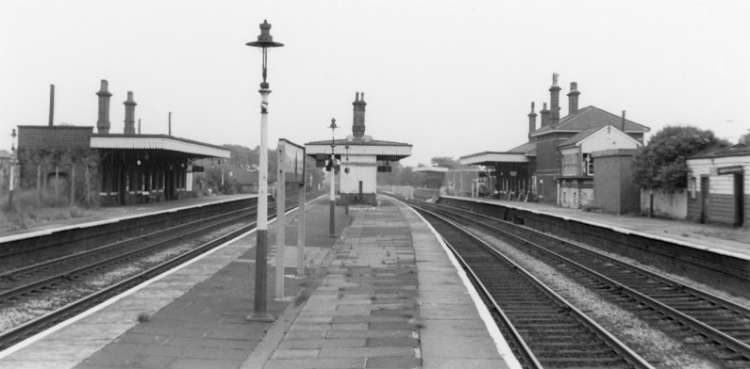
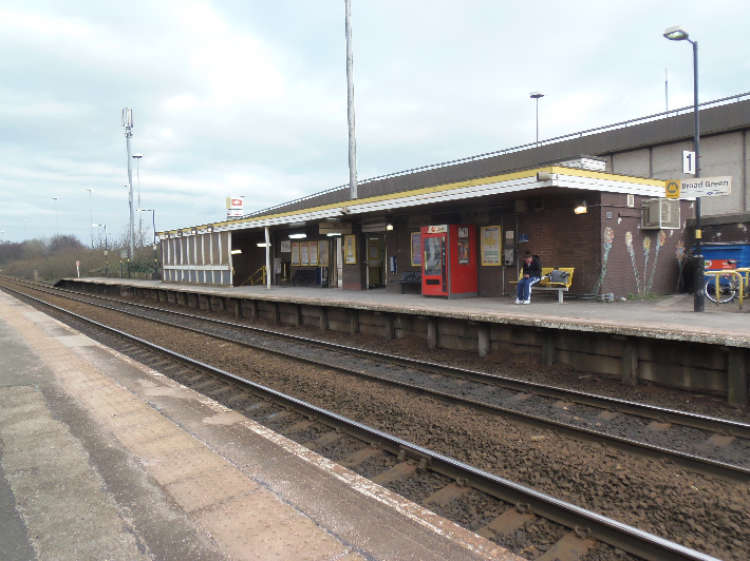
Roby.
Roby opened with the commencement of passenger services on 17th September 1830 and appeared in the timetables from 1st March 1831. The station was totally rebuilt by the LNWR with the quadrupling of the line but was reduced to two platforms when the line was reduced to two tracks in the late 1970’s. The unused platforms were infilled and the subway access was bricked up. In early 2015 the unused platforms had been re-instated and the double track formation laid throughout from Roby to Huyton station. 5th March 2015 saw the introduction of some electric services through the station when the third line was brought into use. The fourth line was brought into use once the Huyton Junction had been modified during late Autumn 2017.
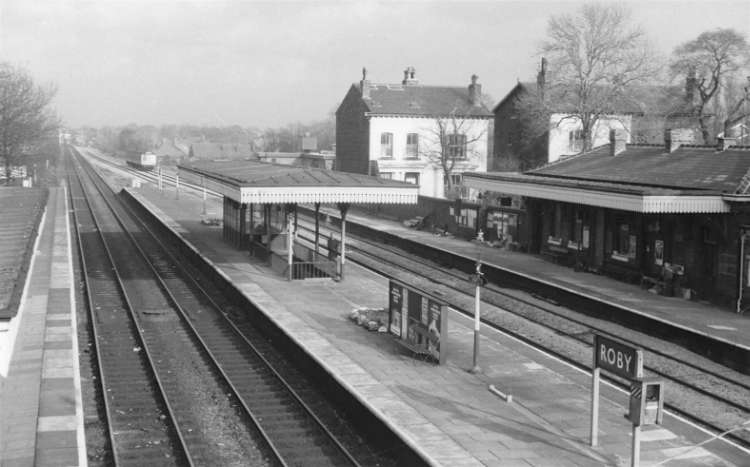

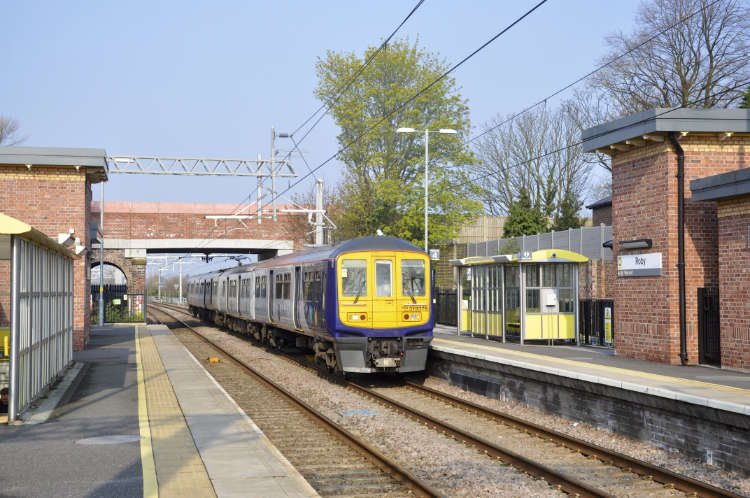
Huyton.
Another of the original 1830’s stations although reconstructed since then the ‘new’ buildings are still old and have some interesting features. One being that some of the stone is actually the stone sleepers from the original line.The buildings seen today are from the LNWR rebuilding period. The station was originally called Huyton Lane Gate but was known as Huyton Lane by 1839 with the Lane part of the name being gradually dropped by the LNWR around 1852. By late 2014 the first of the two new lines was brought into use with Huyton bus station and the BT exchange blocking the path of the second new line; during late 2016 work commenced on moving the bus station access road and by late 2017 it was completed and all four lines open to traffic.
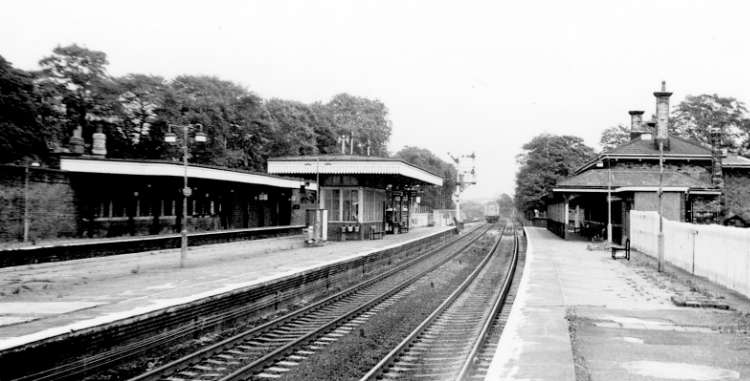
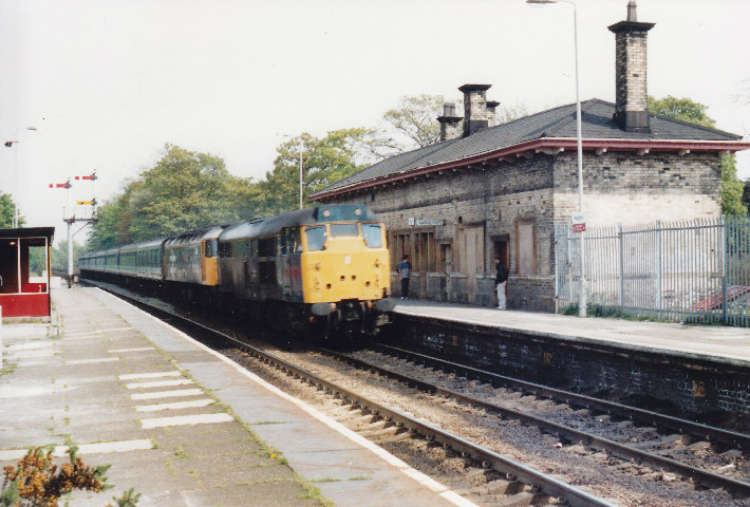


Huyton Quarry.
Directly to the east of the junction with the Wigan line was the station of Huyton Quarry. It opened with the commencement of the passenger service on 17th September 1830 as Bottom of Whiston Incline but was renamed Huyton Quarry by November 1837. The station was to close 10 years after nationalisation of the railways on 15th September 1958 just two days short of its 128 year anniversary.
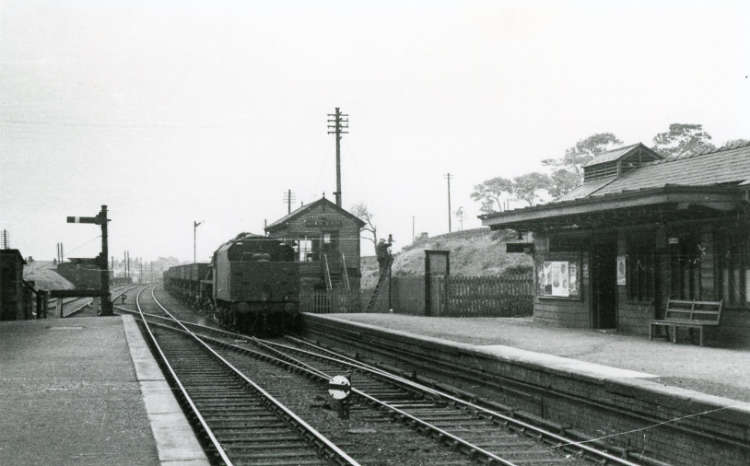
Whiston.
Opened in October 1990 Whiston has been another of the lines success stories with high passenger numbers and a frequent service between Liverpool, Manchester and Warrington. The station has ample car parking and a regular bus sevice.
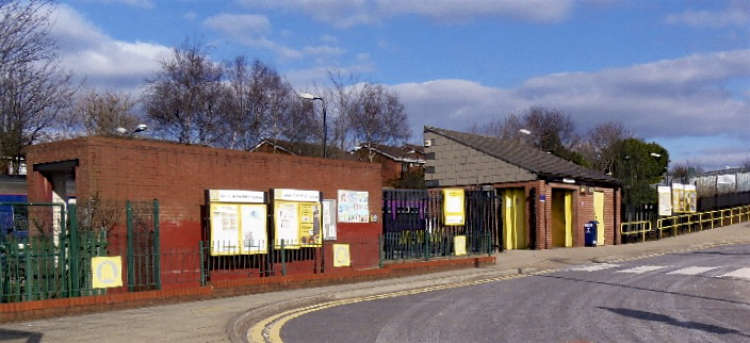
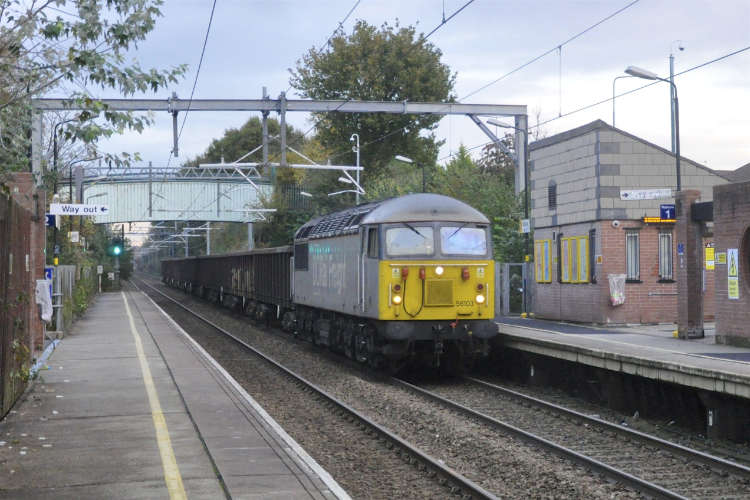
Rainhill.
A station famous in its own right mainly for the Rainhill Trials which were held here to determine the type of traction to be used on the worlds first inter city railway. Nearly as famous is the skew bridge which stands at the west end of the platform and is definitely worth a look. Fittingly British Rail decided that the final booked passenger steam services should run along this line and through this historic station.
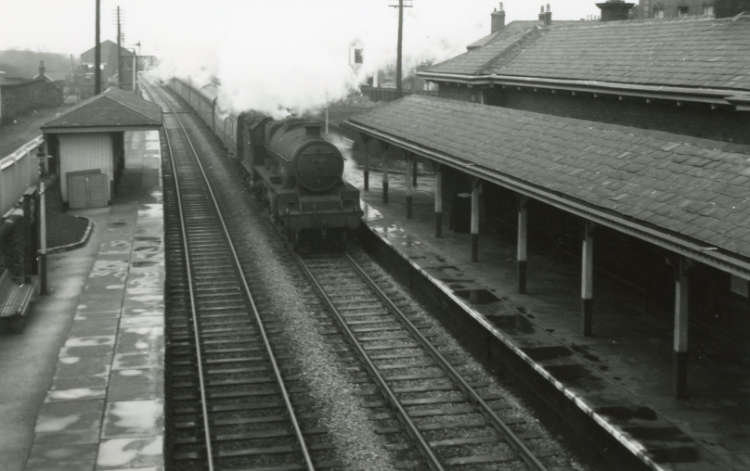
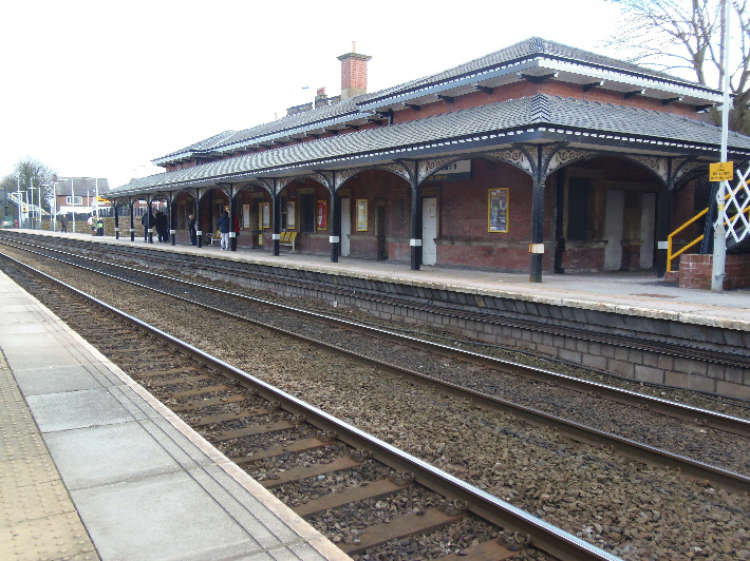

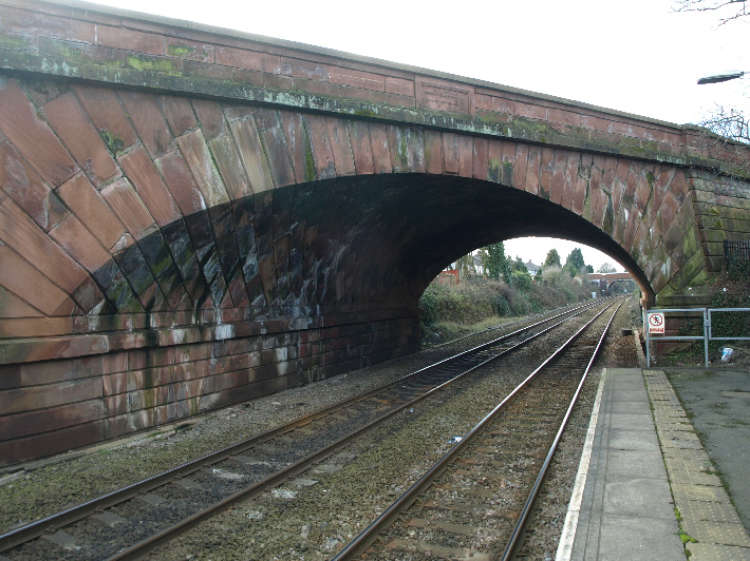

Lea Green.
Lea Green station has stood on two sites in the past 180 years the first being a mile or so from Rainhill which opened on 1st March 1831. It had staggered platforms either side of the road over bridge that is Lowfield Lane. The station closed to passengers on 7th March 1955 and finally to goods on 15th September 1958. The station platforms were totally demolished and no trace remains the station masters house which stood in the station yard opposite the westbound platform still survives as a private residence. The new station opened on 17th September 2000 at a new site around ½ mile further east adjacent to Marshalls Cross Road and with its large car park and good bus links it is a very busy station today.
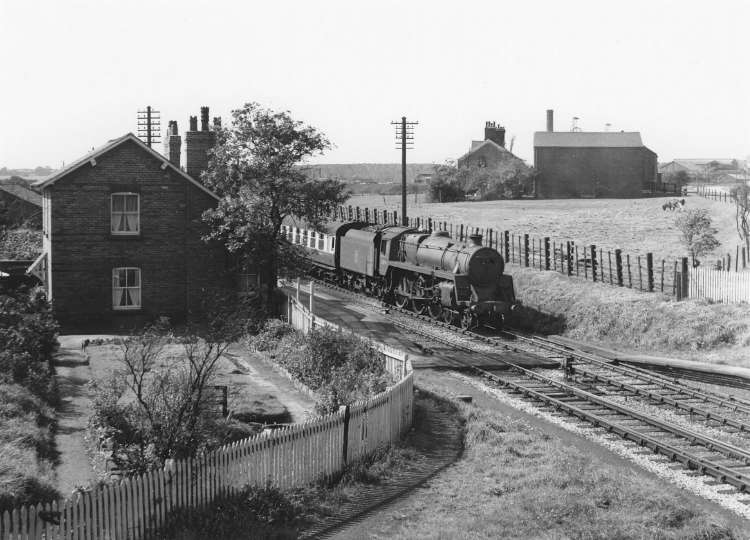
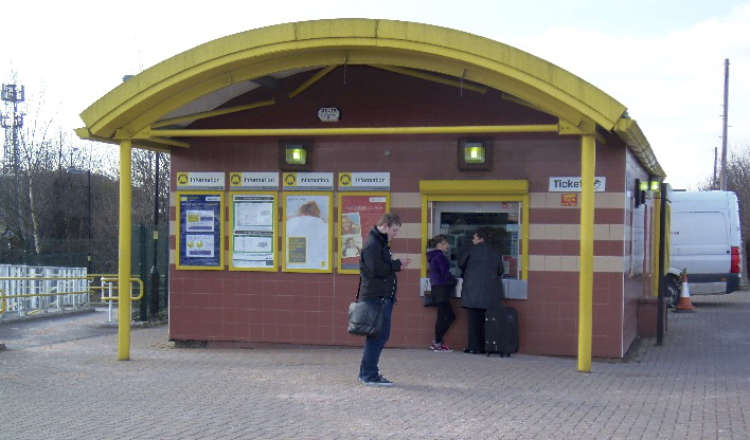
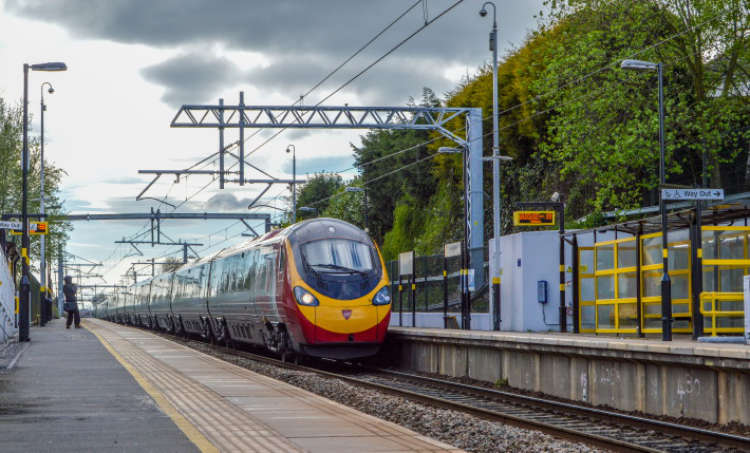
St Helens Junction.
Opened around 1833 the station has contracted over the years with now only two platform faces the bay platforms on either side of the station were taken out of use many years ago. The station still has its LNWR buildings on the eastbound platform and the station masters house is in use as the station cafe. Since the line to Sutton Oak was lifted in the late 1980’s the station is no longer a junction but still retains the suffix. Wires and masts now stretch through the station with electric passenger services having commenced on 5th March 2015.
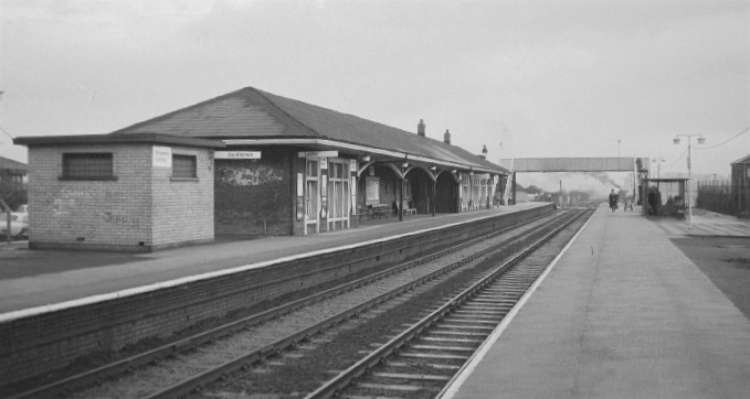
(Reproduced with permission from The Sankey Canal Restoration Society. To view the societies website click here)
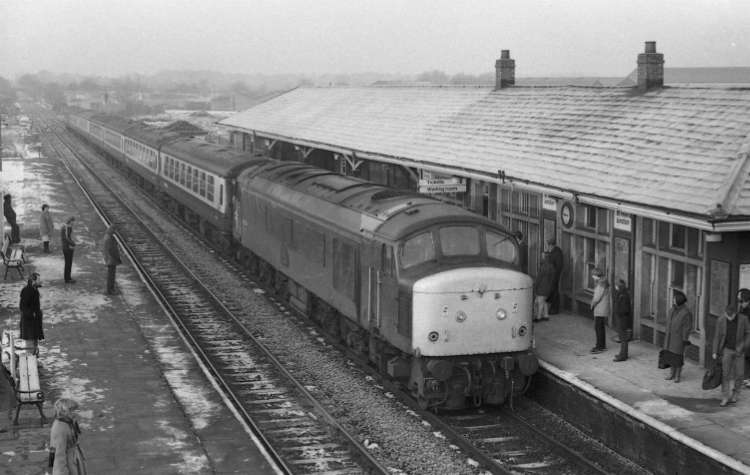

Collins Green.
A station which first appeared in the timetable on 1st March 1831 it was a small station with two platform faces which served a small community. The station was closed by British Rail on 2nd April 1951 giving it a life of just over 120 years.
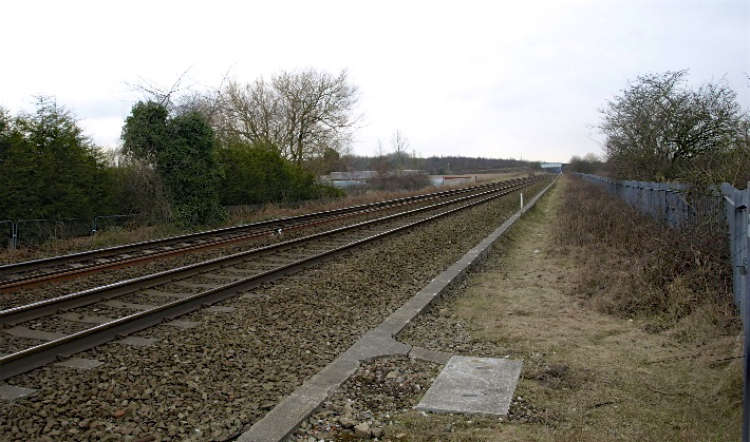
Earlestown.
The station opened with the commencement of passenger services on 17th September 1830 and appeared as Viaduct station in the timetable of 1st March 1831. It was first listed in Bradshaw as Newton Junction and by 1852 had changed to Warrington Junction by 1861 it was being known as Earlestown junction until 5th June 1950 when the suffix was dropped. It is an interesting station mainly due to it having the original ‘Tudor style’ buildings on platform 2. These are sadly no longer in use but were cleaned and refurbished externally for the Rainhill Cavalcade in the 1980’s. Also of interest is the layout of the station it is formed of a large triangle with junctions in the west and east towards Winwick. The Westbound cut off platforms were lightly used for many years, although recently one of these has been brought back into use for Liverpool to Warrington trains as a bi-directional line. The station is well served with trains to Liverpool, Manchester, Chester and beyond along the North Wales coast.

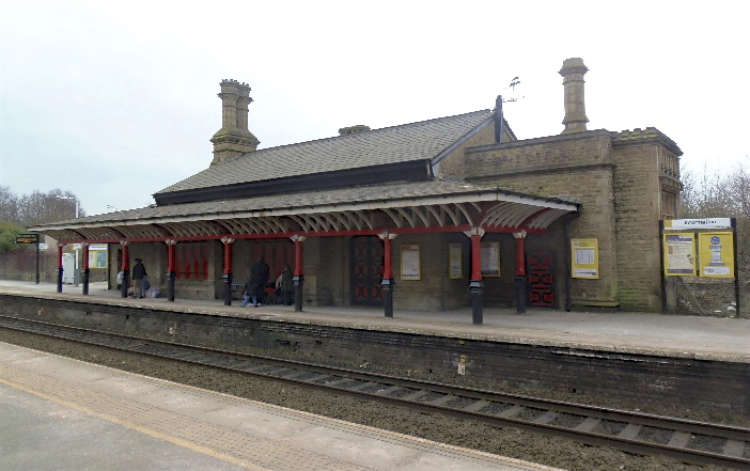
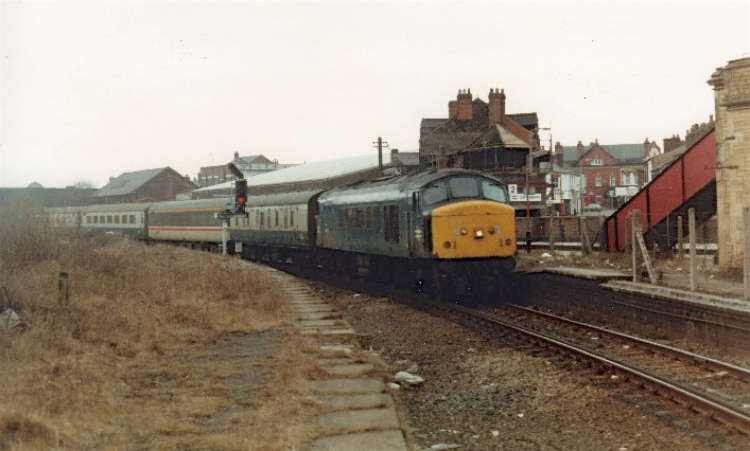


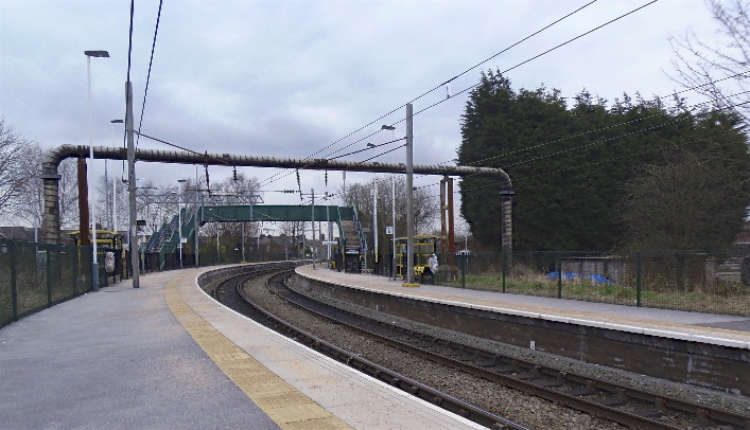
Newton Le Willows.
The station opened with the commencement of passenger services on 17th September 1830 and was called simply Newton the station was renamed Newton Le Willows on 14th June 1888. With some of the best preserved early railway buildings which date from 1840. The station was once a main calling point for the Anglo Scottish express trains to make connections with Liverpool and Manchester this all ended with the opening of the cut off line via Red Bank. The station still had an important role though as a Motor Rail terminal for many years and evidence of this can still be seen today. Another railway link is McCorquodales the printers adjacent to the station which printed copies of Bradshaw and latterly timetables for British Rail. Network Rail announced plans in 2016 for the ‘transformation’ of the station including a new booking hall to the south of the line with extra car parking spaces, a bus interchange, new subway, toilet facilities and step free access to the platforms. This was completed in 2019 with the original booking office building still in place and restored.
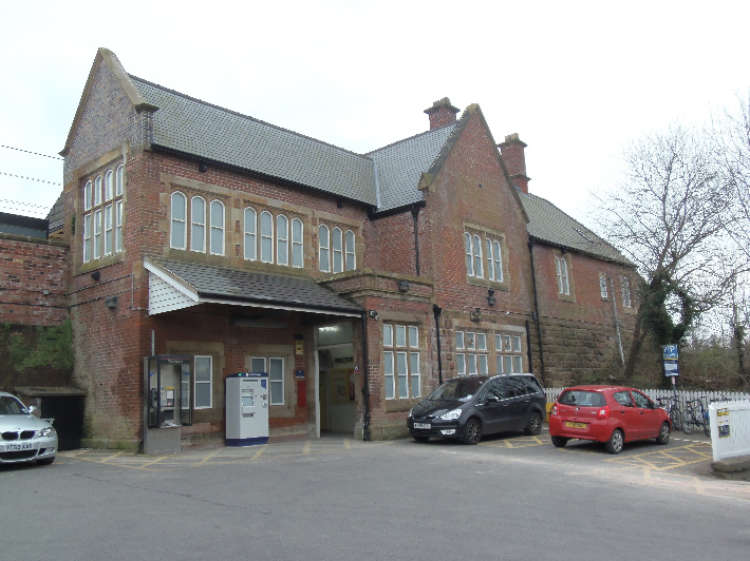


Parkside 1st site.
Immediately after passing the junction to Preston and the North would have stood the first Parkside station. Infamous for being the place of the opening day accident which claimed the life of William Huskisson M.P. a memorial can be seen close to the station site from passing trains. The station here opened with the line in 1830 but had a short life for passengers being closed in 1839. The station did remain open as a luggage station but was closed by 1st May 1878 when the second station closed.
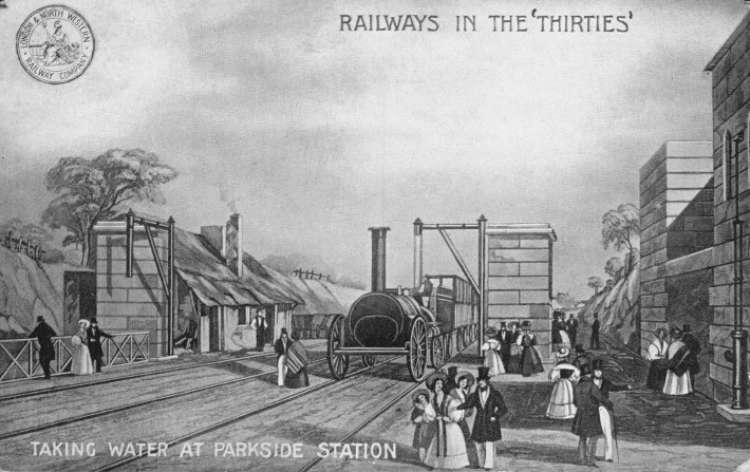
Parkside 2nd site.
Opened in 1839 to replace the first station the second was only a matter of a few hundred yards east of the first. This was due to the new cut off line from the West Coast eastbound toward Manchester therefore more trains could call there. With the station being situated in an area with a low population there was never any real chance of it generating much traffic and it was closed on 1st May 1878.
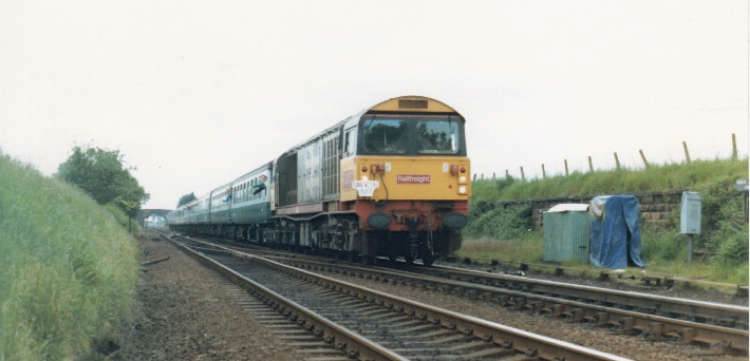
This concludes the stations within the ten mile radius of 8D shed more information of the other stations on the line towards Manchester is available on the main
LNWR Liverpool to Manchester page of the site.
